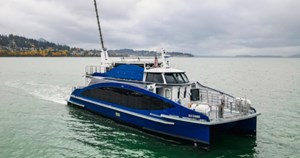News
Chevron New Energies backs H2-powered maritime tech
In the quest to reduce carbon emissions, commercial industries moving goods or people in bulk have a heavier load to carry in more ways than one. It’s more difficult to reduce CO2 emissions from the heavy-duty transportation, aviation and maritime industries than other sectors. Chevron just provided financial backing to zero emissions industries (ZEI) targeting a hard-to-abate sector: the maritime industry.

The financial backing of ZEI’s efforts to create H2 fuel cell power systems is part of Chevron New Energies’ $10-B capital commitment through 2028.
“Hydrogen is uniquely positioned to help tackle some of the areas where electrification won’t be possible,” said Michael Hoban, Chevron New Energies hydrogen general manager. “Hard-to-abate sectors like the maritime industry are a good example of one of those industries where you’ve got a lot of energy on board, and a lot of emissions come from that segment. There are very limited solutions on the market today.”
Establishing a value chain
Chevron New Energies’ two main objectives are to produce low-carbon solutions—including H2—and invest in parts of the value chain that enable those solutions to get to market.
“Our partnership with ZEI is an example of that demand-side enablement where we are seeing a promising technology that we don't want to necessarily do ourselves, but think is important for the market to develop,” Hoban said. “It helps us essentially build and enable an entire value chain where Chevron potentially produces hydrogen. We can get it to customers and then they use it in that end use application. That is why it's important for Chevron to support this.”
Funding boost
ZEI is entering the maritime market with its initial development: a H2 fuel cell for an 84-person passenger ferry that awaits deployment in the San Francisco Bay Area. The company believes that by targeting smaller boats with more commercial appeal, those powered by H2 fuel cells will gain in popularity. Still, significant challenges exist.
“To power a small boat is extremely challenging because of the weight, size and power requirements that go into it,” said Joe Pratt, ZEI CEO.
ZEI intends to use the funds to grow its business and help develop its 250-kW fuel cell.

